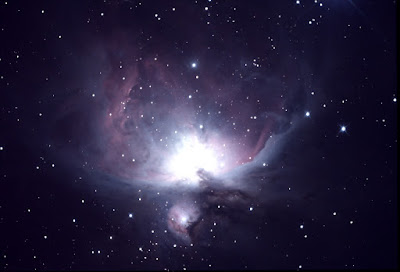There was much rejoicing.
I had the telescope and equipment outside and set up by 8pm. Moonrise was going to be after midnight. This gave me hours of dark sky. Yay!
The cold temperature was the challenge. This piece of equipment is an enormous help, though. Using it, I was good for hours even though there was frost forming everywhere.
 |
| Recommended |
So, what did I see?
It turns out that the transparency of the sky made some of the smaller, dimmer, objects on my observing list nearly impossible to see. So, I concentrated on bigger, brighter objects.
Be sure to click on the images to see their larger versions.
M33 The Triangulum Galaxy
It fits nicely in the field of view of the ZWO ASI294MC imager and is easily visible with only a couple of seconds exposure. I used SharpCap's live stacking to tease out more details and captured this image. It is 52 frames stacked. Each frame had an exposure of 8 seconds.
 |
| A Giant Pinwheel in Space |
M31 The Andromeda Galaxy
This galaxy is huge and bright. You can see it without any optical assist from a dark sky location, and with binoculars, you can see it even under some city lights! The challenge posed to me is that it is so big and bright. It swamps the imager and doesn't fit in the field of view.
But, I tried it anyway. Here is what I captured.
It is 25 frames stacked. Each frame had an exposure of 8 seconds.
M42 The Orion Nebula
The Orion Nebula, again? Yes, no astronomy session is complete without at least taking a peek at the beauty of this bright nebula.
This image consists of 17 frames and each frame has 8 seconds of exposure.
Pretty, huh?







Beautiful images! Especially M42. It looks like a poppy blooming.
ReplyDeleteThanks! M42 looks good through an eyepiece, too. It's a greenish grey in color for most people because there aren't enough photons to excite the color sensitive parts of the eye. Some people, however, usually women and young children, can see the color.
DeleteI don't think you can have too many photos of the Orion Nebula. And I quite like the photo of Andromeda.
ReplyDeleteI love the constellation of Orion. I look up at it every weekday, clouds willing, shortly after opening to garage to take the car to work. Not only is the nebula naked eye visible, the star Betelgeuse is due to go supernova . . .
Delete